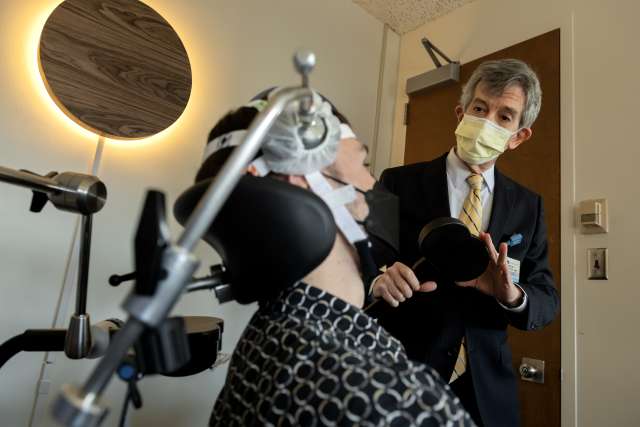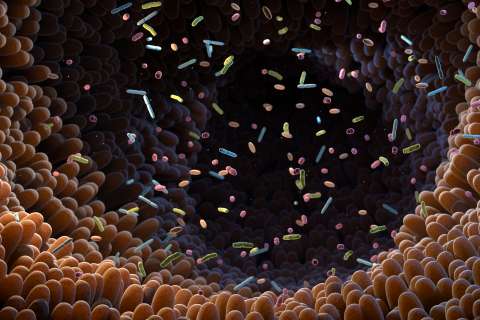Kate Kelly described it as a dense fog lifting – a fog that had enveloped her for three decades.
“It’s as if it’s a really black fog and then all of a sudden you realize it’s not as black as it was, then you realize it’s turned grey, then you can start to see your feet, and then there’s sunshine,” said Kelly, who was diagnosed 30 years ago with major depressive disorder.
Kelly, 63, was describing the sensation of undergoing Transcranial Magnetic Stimulation (TMS) through UCLA TMS Clinical and Research Service, part of the Jane and Terry Semel Institute for Neuroscience and Human Behavior. There are UCLA TMS clinics in Westwood, Pasadena and Calabasas.
During TMS, electromagnets placed on the head send out targeted magnetic waves to stimulate and “reset” brain networks that regulate mood. TMS was approved by the U.S. Food and Drug Administration in 2008 for the treatment of major depressive disorder.
TMS also has been found to help with obsessive compulsive disorder (OCD) and smoking cessation. Off-label uses include treatment of chronic pain and tinnitus – ringing, clicking and other persistent sounds in the ear, a condition for which there are few effective treatments.
Thus far, insurance coverage is limited beyond the treatment of major depressive disorder. Even for depression, a patient must have previously found little or no improvement with medicine.
How does TMS work?
Transcranial Magnetic Stimulation increases neuroplasticity, or the ability to form new pathways in the brain, allowing the patient to get out of a depressive rut.
“We’ve come to understand that depression is a disease state of the brain network – wrong connections being formed in the brain,” said Andrew Leuchter, MD, distinguished professor of psychiatry and director of the TMS program and of the Neuromodulation Division of the Semel Institute.
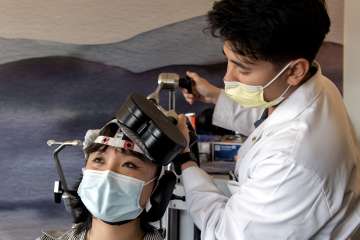
The strength of the magnetic waves is calibrated to the individual patient, and different parts of the brain are targeted depending on the goal.
To treat depression, for example, the magnetic waves are aimed at an area of the brain called the prefrontal cortex; for OCD, it’s the region around the top of the head known as the pre‐supplementary motor area; for tinnitus, the target area is the auditory cortex, above the left ear.
Kelly described TMS as feeling like a series of pricks, or pulses, coming from the magnets. She said the pulses take a little getting used to, but they are not uncomfortable.
“It’s really fast and then it stops. And just when you’re starting to fall asleep it starts again,” she said. “Some people said it felt like a woodpecker tapping on your head.”
Patients usually receive 36 treatments, ranging from about 20 minutes to an hour per session depending on a patient’s needs. The series starts with daily sessions Monday through Friday for six weeks and then tapers off for the remaining treatments.
“Just like you have to take an antidepressant pill every day, you have to expose the brain to treatment every day to increase the neuroplasticity,” Dr. Leuchter said.
He said studies are ongoing into whether the course of treatment could be condensed to five sessions a day for five days.
“Two-thirds of our patients get substantially better; 70 percent of the time the benefits last a year – that’s the longest long-term follow-up study we have,” he said. “They might need booster sessions, a tune-up. The beauty of it is, if it works once, it tends to always work again. You come back and we put the magnets in the same location.”
The treatment leads to a decrease in anxiety, an increase in energy, and a general improvement of mood. Dr. Leuchter said after treatment, patients often tell him they “feel lighter.”
He said some patients have remained well for years after treatment, some indefinitely. Some need to come back for a follow-up treatment after a few months, or after a year or two.
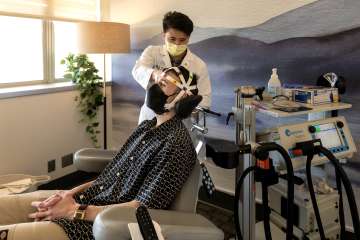
“We’re still trying to understand how some patients do two treatments and they’re well and for others it takes 20 treatments before they start to feel better,” he said.
For Kelly, who began TMS at the start of 2023, the benefits have come quickly and steadily.
“The first week, I started noticing a little difference. The longer the treatments went, the better I felt and I keep getting better,” she said. “Progress has been phenomenal, and I don’t have this fear that I have with medicines – I don’t get the sensation that it will numb you so much you don’t feel anything.”
Kelly has noticed changes in the way she goes about life. An activity such as walking through a crowded restaurant has taken on a different tone. Kelly had typically been highly self-conscious walking from her table to the restroom at a restaurant. Was everyone watching her? Was she walking straight? Were her shoulders hunched?
“Now, for the first time in 30 years, it’s different,” she said. “A month ago I went to the restaurant and walked back to the table feeling like I was 20 again, that confidence you have.”
What TMS is not
When clinicians introduced Kelly to the treatment, she asked if TMS was the same as electroconvulsive therapy (ECT), or “shock therapy,” a treatment that dates back to the 1930s.
While both treatments stimulate the brain, TMS is very different, said Dr. Leuchter.
“We discovered many years ago that ECT was an effective treatment for depression – you put electricity in the head, which causes a seizure and resets brain frequency,” he said. “Then we thought, what if we use magnetic waves to accomplish the same thing but without a seizure – resetting brain networks without the ECT side effects.”
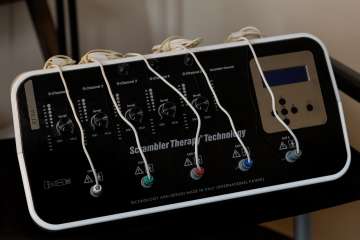
Those side effects most commonly include confusion and short-term memory loss. ECT, which is still used in severe cases, also requires general anesthesia, whereas TMS does not.
“The first concern some people have is they think it sounds like science fiction – ‘You’re putting magnets on my head?’ The second concern is, ‘Is this like ECT, shock therapy?’ No. It’s very targeted. For most patients, TMS has fewer side effects than medication.”
Whenever the brain is stimulated there is a risk of seizure, he said, but it’s very remote with TMS, about one in 30,000 cases. No one has ever experienced a seizure in the 10,000-plus treatments per year that the TMS center has administered, he said.
TMS side effects may include some discomfort at the site where the magnets are placed. The magnetic wave has to go through the skin, nerves, muscle and bone on its way to the brain. Some people may experience a muscle-tension headache that dissipates once the TMS machine is turned off, he said,
Another concern of some patients considering TMS is whether the treatment will change their personality – who they are at their core.
For others, that’s no concern at all.
“That was the opposite of what I was worried about,” said Sophie Barnes, 25, who began TMS in September, after several years of struggling with severe anxiety and depression.
“I felt like myself again, that’s the best way to put it,” she said. “At that point in my life I didn’t feel like myself at all. It’s a night and day difference.”
Kelly feels the same.
“With medication, when I first started 30 years ago, I thought it might make me a different person,” she says. “The wonder of this treatment is it makes you feel like yourself again.”
Help Shape the Future of Mental Health by Joining the UCLA Mental Health Research Registry
